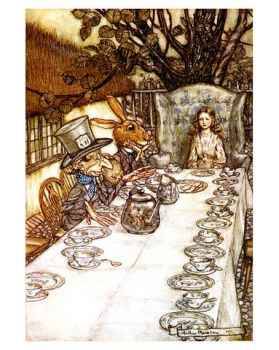The novel, by Alice Sebold, starts with the stark facts: "My name was Salmon, like the fish; first name , Susie. I was fourteen when I was murdered on December 6, 1973." Susie is a member of the Chess Club, the Chem Club, burns everything she tries to cook in home ec, and loves biology and her teacher, Mr. Botte. A boy in her class, Ray Singh, has a crush on her and is close to kissing her for the first time. Her sister, Lindsey, is a year younger, and her brother, Buckley, is four. She is lured into the underground hiding place built in the cornfield by her neighbor. The design intrigues her and she is too naive to realize what is going on until it is too late.
Susie finds heaven a different place than she has imagined. She has a roommate, Holly, and an intake counselor, Franny. Heaven, for Susie, looks a lot like her neighborhood and the people she sees are in their version of heaven that overlaps hers. Franny tells Susie and Holly that they can have whatever they desire--except to grow up.
But Susie can watch her family and friends left behind on Earth. The police are stymied by the lack of clues to her death--the only part of her body that is found is an elbow. Her sister, Lindsey, handles her grief by pushing it down deep. Buckley doesn't understand, at first, that Susie will never be coming back. Her father searches for the killer on her own. Her mother moves away and Susie's Grandma Lynn comes to take care of Lindsey and Buckley. The detective handling the case can't forget it.
Life continues on Earth and Susie's understanding of Heaven and what she can, and cannot, do broadens. Two classmates of Susie's continue to feel her absence: Ray Singh and Ruth Connors. Susie's spirit had brushed by Ruth on her way to heaven and Ruth had felt it. Susie's spirit haunts Ruth throughout high school and her memory affects Ray.
But the story is not dark and gloomy. Ultimately, it's about love, the different ways it's expressed, and the healing love brings. And, for us parents, it's about how we can't always protect our children from evil, but we have to let them grow up.
Ms. Sebold's idea of heaven and the afterlife doesn't exactly jibe with any Christian theology I'm familiar with, although I like the idea that there are dogs in heaven. But it works really well for the novel and what a fourteen-year-old girl might envision.
On the March Hare scale: 3.5 out of 5 Golden Bookmarks
(crossposted on Catholic Media Review)
Saturday, April 25, 2009
Book Review: The Lovely Bones
Posted by
March Hare
at
8:06 PM
![]()
Labels: Book Reviews
Subscribe to:
Comment Feed (RSS)




|